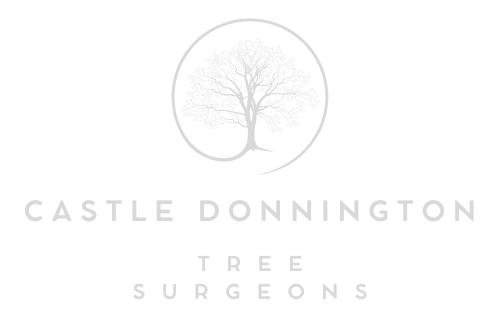How Crown Reduction Prevents Large Branch Failures
Trees are living structures that must balance their weight and growth over time. As they mature, branches can extend too far from the main trunk or grow unevenly, putting excess stress on certain limbs. When high winds, heavy rain, or snow occur, these large branches can become vulnerable to breakage — causing damage to property, nearby vegetation, or even the tree itself.
At Castle Donnington Tree Surgeons, we use professional crown reduction techniques to minimise these risks. By carefully managing the size and structure of a tree’s canopy, we help strengthen it against failure while maintaining its natural form and long-term health.
Understanding Crown Reduction
Crown reduction is a precise pruning technique that involves shortening the height or spread of a tree’s canopy by selectively cutting back branches to suitable growth points. Unlike topping, which is a harmful and outdated practice, crown reduction focuses on controlled, strategic pruning to preserve structural integrity and encourage balanced regrowth.
When carried out correctly, crown reduction reduces the mechanical stress placed on large limbs, lessens wind resistance, and redistributes weight evenly throughout the canopy. This makes it an essential method for preventing large branch failures, particularly in mature or exposed trees.
Why Large Branch Failures Occur
Large branch failure is one of the most common structural issues seen in older or poorly maintained trees. Several factors can contribute to this problem, and understanding them helps explain why professional intervention is necessary.
Common causes of branch failure:
- Excessive branch weight: Long, heavy limbs extending away from the trunk create leverage that can cause cracks or splits.
- Weak branch unions: Poor attachment points or included bark can weaken structural joints.
- Wind stress: Trees with dense or uneven crowns catch more wind, increasing the strain on upper branches.
- Decay or cavities: Fungal decay or insect damage can compromise internal wood strength.
- Poor previous pruning: Incorrect cuts or over-pruning can leave branches unbalanced and susceptible to snapping.
Crown reduction by Castle Donnington Tree Surgeons directly addresses these issues by lightening the load and improving balance throughout the canopy.
How Crown Reduction Strengthens the Tree
A properly executed crown reduction redistributes weight and improves the overall stability of the tree. This makes it better equipped to withstand harsh weather conditions, particularly high winds that might otherwise place dangerous stress on large branches.
Key benefits of crown reduction for preventing failures:
- Reduced weight on limbs: Shorter, lighter branches are less likely to split or break under their own weight.
- Lower wind resistance: A thinner, more balanced canopy allows air to flow through rather than push against the tree.
- Improved branch structure: Cutting back to lateral growth points promotes stronger, healthier new shoots.
- Enhanced symmetry: A balanced crown ensures even distribution of stress throughout the structure.
- Better long-term resilience: Trees maintained through crown reduction are less prone to structural failures and decay.
By combining technical skill with an understanding of tree biology, Castle Donnington Tree Surgeons ensures each tree receives the right level of pruning to enhance safety and longevity.
When to Consider Crown Reduction
Not every tree requires crown reduction, but it becomes essential when large branches begin to extend excessively or show signs of strain. Certain visual indicators can help property owners recognise when it’s time to act.
Signs your tree may need crown reduction:
- Overhanging limbs that stretch close to buildings, roads, or power lines.
- Cracks or splits forming where branches meet the trunk.
- Uneven canopy shape or heavy limbs growing in one direction.
- Trees exposed to strong winds or located in open landscapes.
- Excessive shading that indicates a dense, overloaded crown.
Addressing these issues early prevents them from developing into major hazards, especially during stormy weather.
The Process of Crown Reduction
Crown reduction is a skilled procedure that must be performed with precision to avoid damaging the tree’s natural structure or causing undue stress.
At Castle Donnington Tree Surgeons, our team follows industry best practices to ensure optimal results:
- Assessment: We begin with a full inspection to identify weaknesses, potential hazards, and suitable reduction points.
- Selective pruning: Only specific branches are trimmed, focusing on reducing weight while maintaining a natural appearance.
- Balanced shaping: The canopy is carefully reshaped to promote even light distribution and healthy regrowth.
- Post-care advice: We provide guidance on maintaining the tree’s health after pruning, ensuring it recovers quickly and remains stable.
Why Professional Expertise Matters
Crown reduction is not a task for general gardeners or DIY enthusiasts. Poorly executed pruning can lead to long-term damage, structural instability, or even tree death. Removing too much foliage at once can shock the tree, while incorrect cuts can create entry points for disease.
The specialists at Castle Donnington Tree Surgeons combine technical expertise with a deep understanding of tree physiology. Each reduction is tailored to the species, size, and environment of the tree, ensuring that the work enhances both safety and vitality.
Maintaining Safety in Urban and Suburban Environments
In built-up areas such as Castle Donnington, Leicestershire, large trees often coexist with homes, vehicles, and pedestrian pathways. This increases the importance of preventive maintenance. Regular crown reduction ensures that branches remain well-balanced and less likely to fall during storms or high winds, protecting both people and property.
It also helps maintain harmony between trees and surrounding infrastructure, allowing them to coexist safely without posing unnecessary risks.
The Long-Term Value of Regular Crown Management
Crown reduction should be seen as part of an ongoing tree care strategy rather than a one-off task. Trees evolve continually, and without regular assessment, they may develop heavy or unstable limbs over time. Scheduled maintenance not only extends the lifespan of the tree but also preserves its shape and aesthetic appeal.
By engaging experts like Castle Donnington Tree Surgeons, property owners benefit from a tailored maintenance plan designed to promote healthy, safe, and visually appealing trees all year round.
Conclusion
Crown reduction is one of the most effective ways to prevent large branch failures and ensure trees remain safe, stable, and attractive. By redistributing weight, improving airflow, and maintaining structural balance, this technique reduces the risk of damage during storms or high winds.
For property owners in Castle Donnington, Leicestershire, Castle Donnington Tree Surgeons provides expert crown reduction services designed to protect your trees and surrounding areas. Through skilled pruning and regular maintenance, we help your trees thrive safely, enhancing both the health of your landscape and the peace of mind of your property.
Call us on: 01332 215 696
Click here to find out more about Castle Donnington Tree Surgeons
Click here to complete our contact form and see how we can help with your tree needs.

